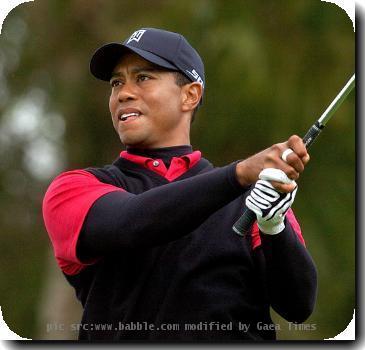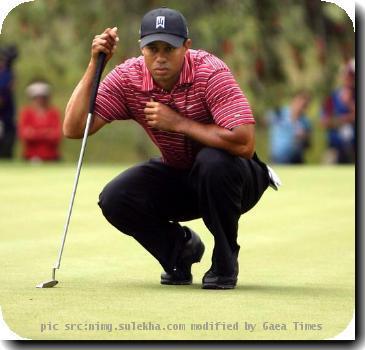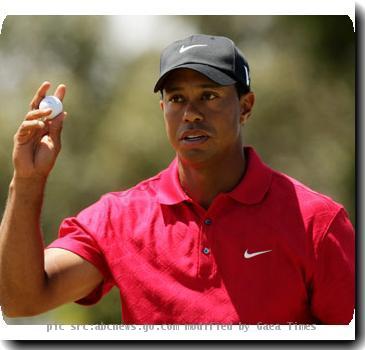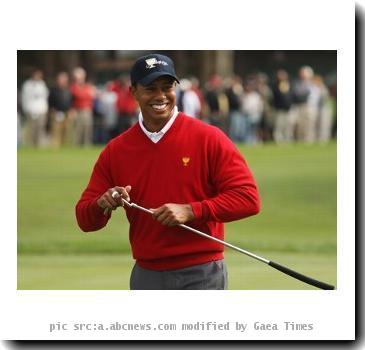Swing coach Hank Haney gets out at just the right time as another era ends with Tiger Woods
By Doug Ferguson, APTuesday, May 11, 2010
Haney spares himself (and Tiger) lots of innuendo
PONTE VEDRA BEACH, Fla. — For all the criticism Hank Haney has faced over six years and six major championships working with Tiger Woods, his latest move deserves nothing but praise.
Haney resigned Monday night as his swing coach, and the timing could not have better.
“I know Tiger Woods will be successful in the future no matter who helps him,” Haney said on his website. “He is an incredible athlete with an incredible work ethic.”
Haney informed his star client through a text message. He said Woods was with his two children when they exchanged messages, and they would talk more on Tuesday.
Speculation of a split began at Quail Hollow. Despite what Woods said about Haney at The Players Championship — “I’m still working with him, yeah” — it became clear last week from those close to the world’s No. 1 player that change was imminent. And even though Haney said he had just been paid for the next quarter, he knew it was coming, too.
The only question was how long it would take.
While the timing looks bad — Woods is at his lowest personally and professionally — Haney did not walk out on him. What he did was spare Woods from having to spin tales about their relationship for the next however many months. He also spared the media and the public from having to listen to it and speculate about it.
That’s how it was with Butch Harmon.
Woods began the process of leaving Harmon in the summer of 2002. In effect, they were done at the PGA Championship when Woods told him at Hazeltine he was going on his own. Yet he continued to mention Harmon as his coach through the following summer, and Woods never confirmed he was working with Haney until nine months after they officially started.
Stepping aside was a gracious move by Haney.
Where does Woods go now?
The idea always has been for him to own his swing, although every player can use an extra set of eyes. To the casual fan, a logical move is for Woods to return to Harmon. That’s not going to happen. While their relationship is good — they chatted on the back end of the range last week as Harmon worked with Dustin Johnson — there has been too much criticism of each other over the years. Besides, Harmon’s star pupil is Phil Mickelson, who is trying to replace Woods at No. 1.
It’s possible Woods could work with Harmon — but only if it’s Billy Harmon, an outstanding teacher who stays out of the spotlight.
There was some whispering last week when Woods played a practice round with Sean O’Hair and Hunter Mahan because both work with Canadian-born coach Sean Foley, who is based in Orlando. Woods is friendly with both players. He also likes playing practice rounds with Nick Watney, who is coached by Butch Harmon. Go figure.
Haney never got his due, and probably never will.
He could not escape the shadow of 2000, when the swing that Woods rebuilt with Harmon produced 10 victories in 22 starts and perhaps the greatest summer in golf. Not only does that include three straight majors, two of them — the U.S. Open at Pebble Beach and the British Open at St. Andrews — were by a combined 23 shots. Woods never looked more dominant.
But how can anyone ignore what Woods achieved from 2006, when his changes with Haney had taken full affect?
Woods played 62 official tournaments worldwide — he missed eight months with reconstructive knee surgery — and won 28 times, which is an absurd 45 percent rate of winning. Woods won or was runner-up 61 percent of the time. After he missed the cut at Winged Foot in the U.S. Open following the death of his father, Woods didn’t finish worse than second in stroke play for seven month. That stretch includes seven straight PGA Tour victories, a streak that ranks only behind the 11 in a row won by Byron Nelson in 1945.
The critics — including some teachers who simply were jealous of Haney — attributed that only to the greatness of Woods.
That’s where it should start no matter who is teaching him.
Haney, whom Woods met through Mark O’Meara, does not have the gregarious personality of Harmon and does not take criticism easily, perhaps because it came so soon. As Haney noted after Woods won the 2005 British Open at St. Andrews, Woods was given two years for his swing overhaul with Harmon to take hold, and “they gave me two minutes.”
But he was always sensitive when it came to Woods’ accuracy off the tee.
“You know what the biggest weakness in Tiger’s game is?” Haney once said. “The short game.”
He then went on to back up what sounded like an insane rant with statistics about Woods’ putting, especially three-putts. He also said Woods could be magical with a wedge from the toughest spots, yet struggled with simple chip shots. Haney usually was right.
Ultimately, the proof is about results.
Woods won 33 times on the PGA Tour, including eight majors, in six years as a pro until telling Harmon he was going to work on his own. He won 31 times on the PGA Tour, with six majors, in the six years he worked with Haney.
Woods won by greater margins — shocking margins in some cases — under Harmon. He played with more consistency under Haney, finishing in the top three on the PGA Tour at a 56 percent rate (compared with 42 percent under Harmon).
Just like Haney, whoever is next has a tough act to follow and will face more scrutiny than any other coach. Unlike the previous two coaches, he will be dealing with a player trying to fix more than a swing.
Tags: Events, Florida, Men's Golf, North America, Ponte Vedra Beach, Tiger Woods, United States



